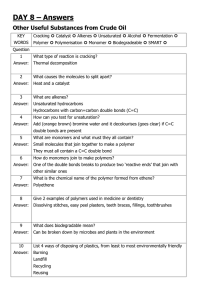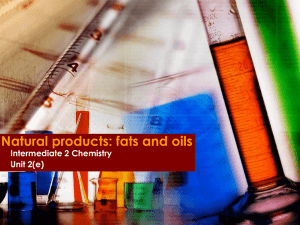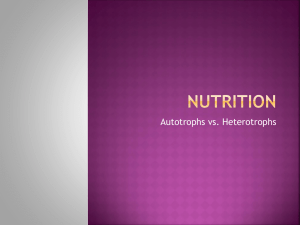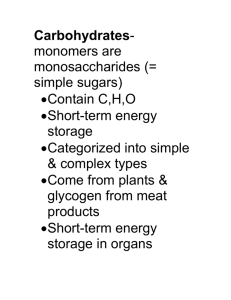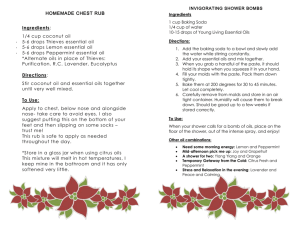Plant Oils - Don't Trust Atoms
advertisement
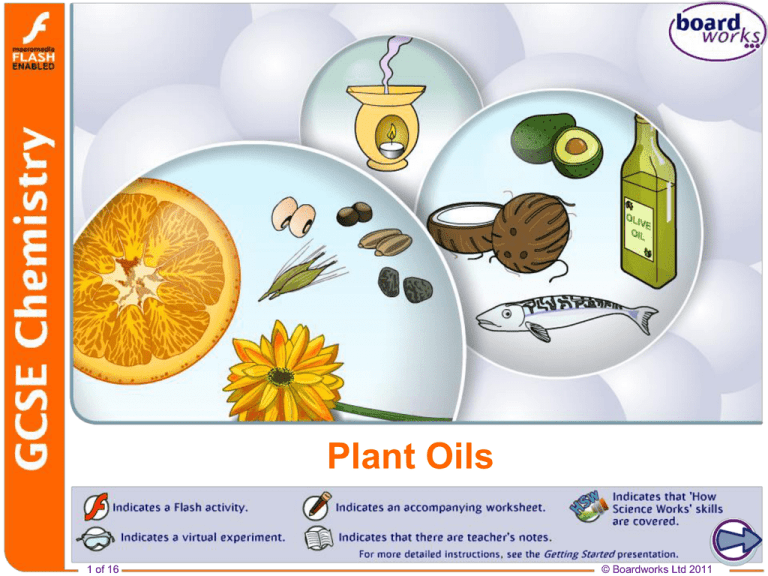
Plant Oils 1 of 16 © Boardworks Ltd 2011 Plant Oils Learning Objectives: 1.Describe how plant oils are extracted. 2.Explain the differences between saturated and unsaturated fats. 3.Evaluate the impacts of using vegetable oils in food. 4.Describe how to make margarine from vegetable oil. 3 of 16 © Boardworks Ltd 2011 Where can we find plant oils? Oils are naturally found in plants, particularly in their fruits, nuts and seeds. They are used in many foods and are an important source of nutrients, but they can also be used as fuel, for example, in biodiesel. The oils can be extracted by crushing the plant material to make a paste, which is then pressed to remove the oils. Oils obtained in this way are often called virgin oils. Sometimes distillation is needed to remove water and other impurities from the plant oils. These oils may be labelled as refined oils. 5 of 16 © Boardworks Ltd 2011 Extracting Plant Oils • Pressing • Solvent extraction • Steam Distillation Pressing (Olive Oil) 1. Crush into paste 2. Mix paste for 30 minutes (oil drops combine) 3. Traditional: Press paste between fibre mats and liquid is squeezed out (Modern: spin in centrifuge) 4. Let liquid sit, oil and water separate 5. Let oil settle in stainless steel tanks for at least one month (impurities settle out) Solvent Extraction (Sunflower oil) • Press the seeds • Add a solvent (such as hexane) which will dissolve the oils and remove them from the solids • Use distillation to separate the oil from the solvent. Steam Distillation (Lavender Oil) 1. Heat mixture until it boils. 2. Steam and plant oil vapour move to the condenser. 3. Gases cool and turn to liquid. 4. Oil and water is collected. 5. Oil floats on top. Types of plant oils 10 of 16 © Boardworks Ltd 2011 Testing oils The level of unsaturation in an oil can be detected using a dilute solution of bromine (Br2), an element which reacts with carbon–carbon double bonds. The bromine water is added to the oil and the mixture shaken. colourless = unsaturated oil remains red = saturated oil. The more bromine that is needed before the solution stays red, the more carbon–carbon double bonds there are in the oil, and the more unsaturated it is. Bromine test for unsaturated oils • Add bromine water (reddish brown) • Turns colourless if unsaturated oils present (alkenes) alkane alkene saturated unsaturated 14 of 16 © Boardworks Ltd 2011 Cooking using plant oils Plant oils have higher boiling points than water. Can be used to cook food more quickly. Cooking in oil can give food a different texture and flavour. Health Concerns • Cooking in oil also increases the energy that the food releases when it is eaten. • Consumption of more energy than you need can lead to weight gain and heart disease. • Saturated fats (animal fats) raise blood cholesterol. • Unsaturated fats (plant oils) are better for your health. Plant oils and health Eating too many saturated oils can lead to health problems. But consuming unsaturated oils can help lower cholesterol and provide the body with essential fatty acids (EFAs). Omega 3 is an EFA found in oily fish, avocados and certain oils, including flaxseed oil, which may help to protect against heart disease. Some people believe that omega 3 fatty acids can improve children’s ability to learn. Many people in the UK eat too many foods containing saturated fats and oils, and not enough containing unsaturated fats and oils. Hardening Oils (Margarine) • Unsaturated fats are liquid are room temperature (they have lower melting pts). • Can be hardened by hydrogenation this turns them into saturated fats. Hydrogenation 1. Add hydrogen gas to unsaturated fat. 2. Using a nickel catalyst. 3. At 60 oC. unsaturated saturated Did you get all that? 1. What are plant oils used for? 2. What are the different methods of extracting plant oils? How do they work? 3. What are the different types of fatty acids in oils? How are they different? 4. What do the terms saturated and unsaturated mean? 5. How do you test for unsaturated fats? How does this work? 6. Why are oils useful in cooking? Why do foods fried in oil turn our crispy? 7. What type of fats are unhealthy and which are healthier for you? Where are these found? 8. What are some potential health concerns of eating too much “bad” fat? 9. What are some potential health benefits of eating “good” fats? 10. How do you make margarine? What is this process called? How does it work? What properties have changed?
